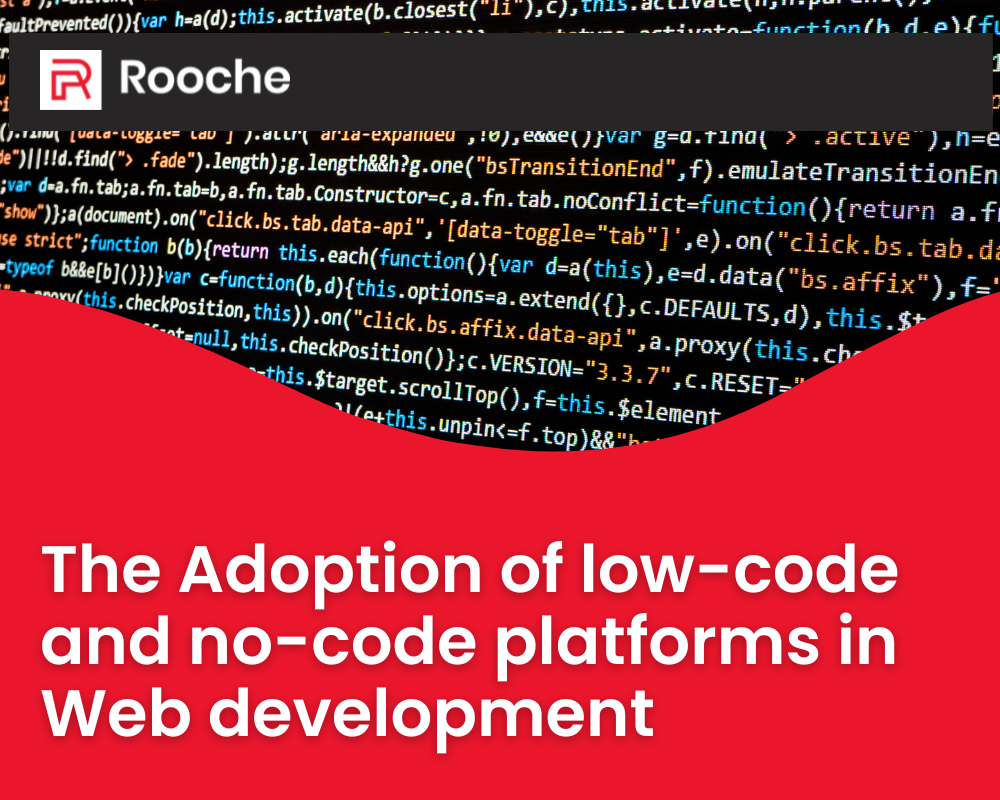What Is Web Design & Why You Need A Great One For Your Business?
What Is Web Design? When we think of web design, we typically think of websites. That’s because web design is […]
Dec 8, 2022
Feb 7, 2023

In web development, low-code and no-code platforms are becoming increasingly popular. These platforms offer businesses the ability to create their own website or app without needing to know any coding at all! With these platforms, businesses can quickly build a professional website or app with very little effort. But what exactly are they, and how do you use them? Let’s take a look.
A low-code platform is a software development platform that allows users to build applications with minimal coding. This means that businesses don’t need to hire an expensive web developer to create their website or app—they can do it themselves!
Low-code platforms have drag-and-drop interfaces which make it easy for anyone to create a functional website or app with relative ease. There are a number of low-code platforms available, such as Wix and Squarespace, which offer templates that users can customize according to their needs.
No code platforms are similar to low code ones in that they allow users to create websites or apps without knowing any coding. However, no code platforms go one step further by providing an even simpler interface than low code ones.
With no code platforms, users don’t even need to worry about customizing templates—they can simply drag and drop elements onto the page in order to create their desired layout. Popular no code platforms include Webflow and Bubble.io, both of which make it easy for non tech savvy people to build stunning sites with very little effort.
Low code/no code platforms make it incredibly easy for businesses of all sizes to create beautiful websites and apps without needing any coding expertise whatsoever! Whether you’re a small business looking for an affordable option or a large corporation wanting something more sophisticated, there’s sure to be a platform out there that fits your needs perfectly. And since most of these services come with tutorials and support forums, you don’t have to worry about getting stuck—help is always just around the corner!
As I mentioned, low-code and no-code platforms are gaining popularity in web development as they allow users to build and deploy applications without writing code. However, despite their ease of use and rapid development capabilities, they still have limitations compared to traditional code-based development.

While low-code and no-code platforms offer pre-built components and templates, they often lack the flexibility and customization that can only be achieved through writing code. They may also have limitations in terms of the complexity of the applications that can be built, the performance and scalability of the resulting applications, and the integration with other systems.
Ultimately, code remains the most powerful tool for building and deploying web applications. With code, you have complete control over every aspect of your application, from the user experience to the underlying data structures and algorithms. Code-based development also provides the greatest flexibility for customization and integration, allowing you to build complex and sophisticated applications that can meet the unique needs of your users.
In conclusion, low-code and no-code platforms have their place in web development. They are best used for simple and straightforward applications. However, for more complex and customized applications, code remains the winner, providing the greatest level of control and flexibility.

What Is Web Design? When we think of web design, we typically think of websites. That’s because web design is […]
Dec 8, 2022

Mobile app development continues to witness a paradigm shift, predominantly due to the integration of Artificial Intelligence (AI). This technological […]
Oct 19, 2023

In a world where businesses are constantly vying for attention, it’s more important than ever to have a strong brand […]
Dec 8, 2022
Join our newsletter and be the first to receive future promo and sale updates from Rooche!